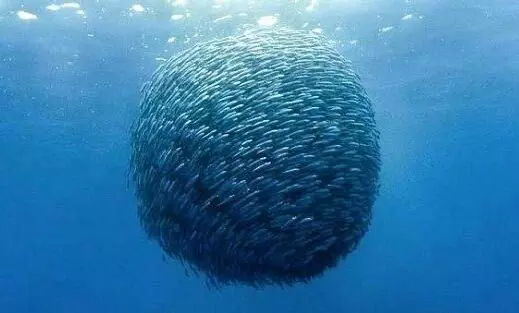Hyderabad: Scientists have found a clue to the dynamical origin of fluctuations in systems like fish schools, swarm of insects, flocking birds, and bacterial colonies, which are called active matter systems. This understanding can be useful in nanotechnology applications like building small-scale energy-efficient bio-devices as well as biomedical applications like characterizing infection spread in organs, antibiotic resistance, and so on.
Such systems are made up of self-driven components which extract energy from their surroundings to generate mechanical work. Due to continuous energy input, such systems are driven far from equilibrium and exhibit, unlike in equilibrium, fascinating collective behaviours, like clustering, "giant" mass fluctuations and anomalous transport. Particularly, their transport properties (molecular properties, analogous to viscosity, thermal conductivity, and mobility that indicate the rate at which momentum, heat, and mass are transferred from one part of a system to another) can be perplexing at times.
The anomalous behaviour of such systems can be understood by considering a cup of coffee stirred with a spoon. If one stops stirring, the coffee will eventually come to rest due to the internal viscous forces which resist the fluid motion. In contrast, imagine "stirring" a bacterial solution, which, under suitable conditions (bacterial concentration), can exhibit perpetual or unceasing collective directed motion; in that case, the viscosity would vanish in such "active" bacterial fluids.
Probing into this anomalous behaviour, scientists from the S.N Bose National Centre for Basic Sciences, an autonomous institute of the Central government's department of science and technology, led by Punyabrata Pradhan, studied a toy model of self-propelled particles and explained the dynamical origin of 'giant' mass fluctuations in the system, providing insights into the emergent properties of such active matters in general. The findings of the study have been published in the journal 'Physical Review E' recently.
The team studied a toy model of self-propelled particles where the ballistic motion of bacteria (like Escherichia coli) was mimicked through long-ranged particle hopping. They showed that, upon tuning concentration beyond a critical value, the conductivity, or the mobility, of the particles diverge. In other words, the resistance becomes zero. Moreover, they demonstrated an intimate relationship between the zero resistance and the diverging mass fluctuations in the system, thus explaining the dynamical origin of "giant'' mass fluctuations in the system.
